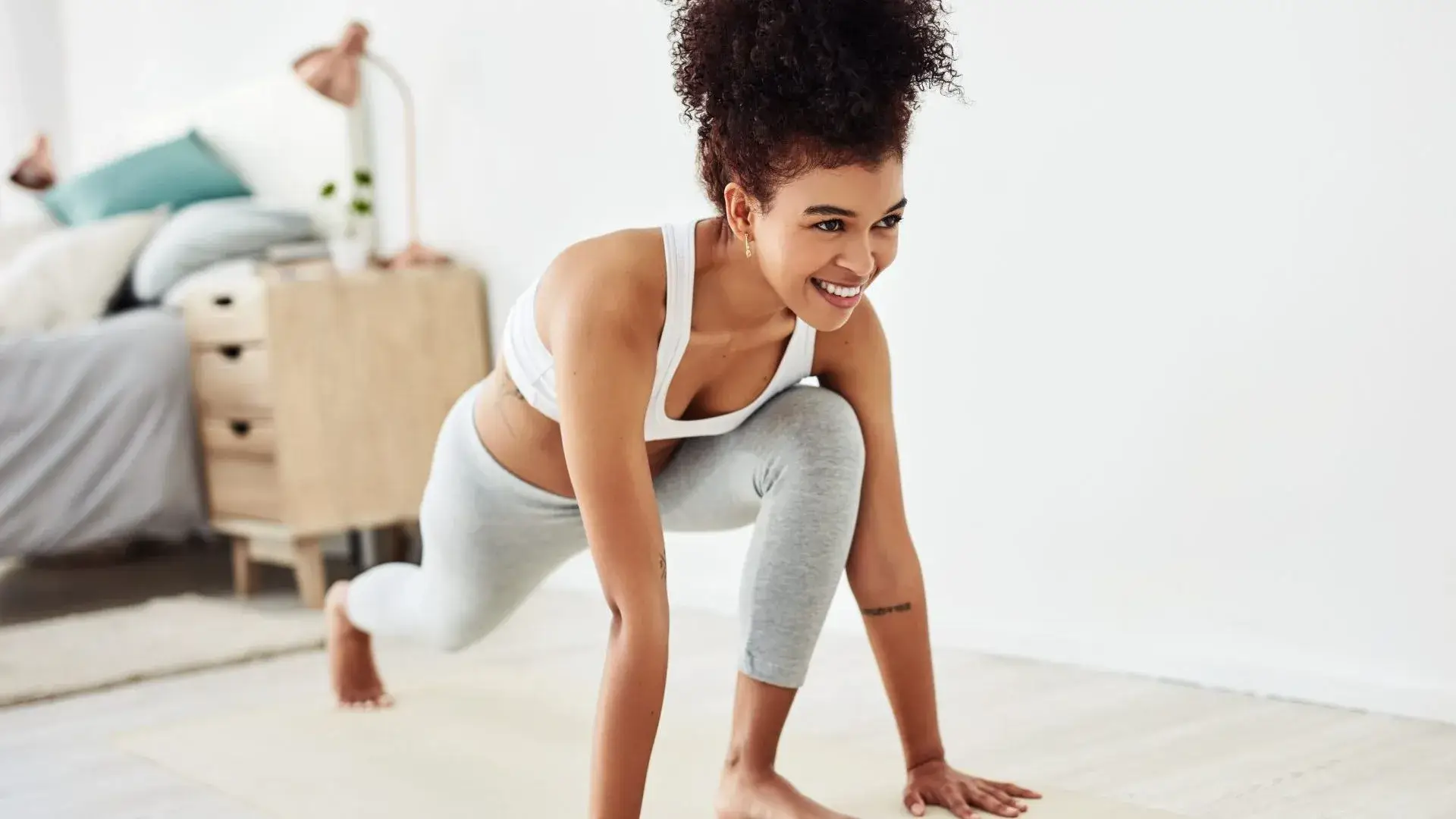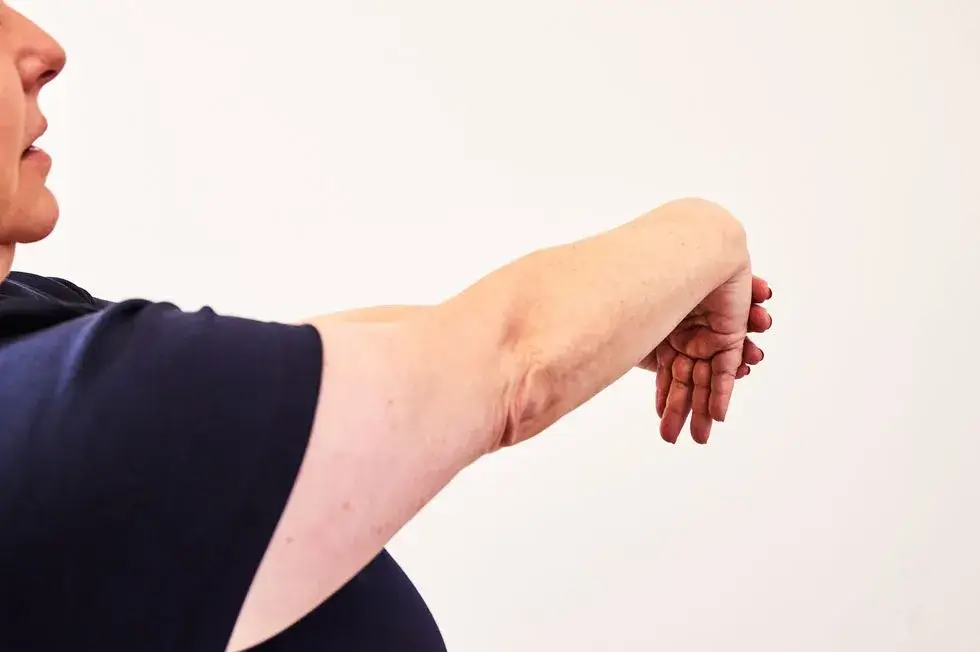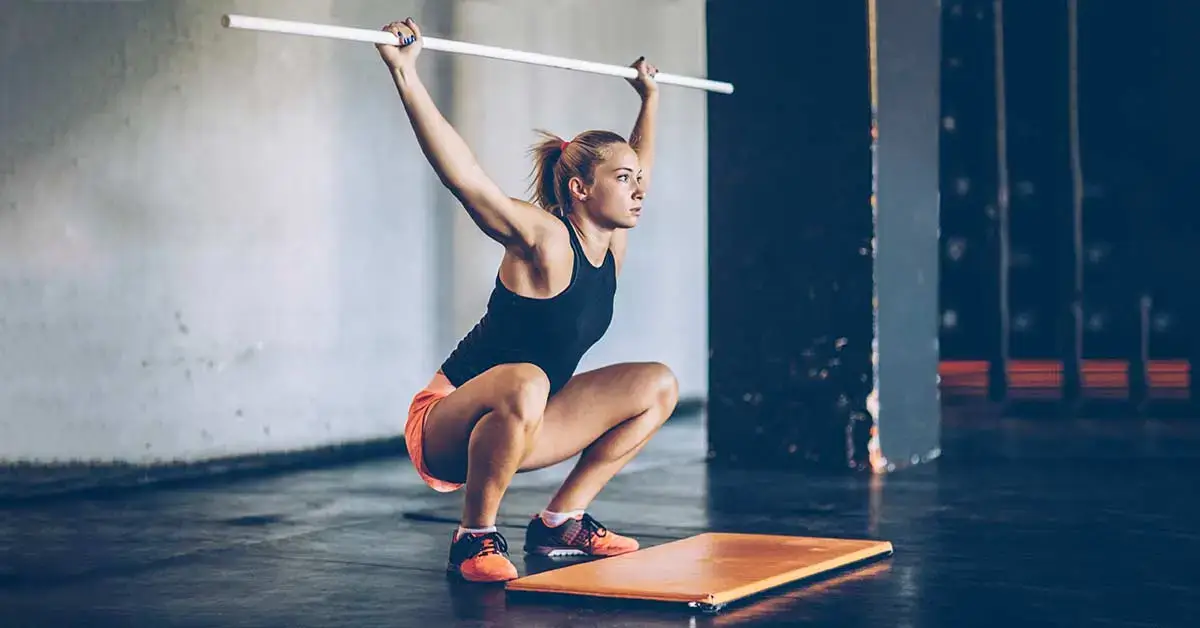Mobility and flexibility, while often conflated, are distinct yet crucial aspects for playing badminton. Understanding the difference between the two is essential:
Mobility: This refers to the range of motion of a joint within its typical parameters. Different joints possess varying degrees of mobility. For example, a hinged knee joint can flex and extend, while a ball-and-socket joint in the shoulder allows for rotation and circular movements.
Flexibility: This pertains to a muscle’s ability to stretch momentarily. Think of it as the elasticity of a rubber band – the more flexible the muscle, the easier it is to elongate. Flexibility plays a vital role in mobility by allowing muscles to move freely around joints.
While flexibility contributes to mobility, it alone is not sufficient. Tight muscles can impede joint movement, leading to instability and misalignment, which increases the risk of injury.
Optimal mobility is crucial for enhancing performance and preventing injuries in badminton. Some joints require stability, while others need mobility. To execute the rapid movements required in badminton, joints and muscles must be both mobile and flexible.
To prepare for badminton and reduce injury risk, proper warm-up routines are essential. Here are some mobility drills targeting the specific joints crucial for badminton play:
Effective Mobility Exercises for Badminton Players
Let’s begin with:
1. Ankle Mobility
Ankle mobility is paramount for badminton players, facilitating quick movements, directional changes, and court stability. Below are exercises tailored to enhance ankle mobility for badminton:

Exercises to increase ankle mobility
- 1. Ankle Rotation (Clockwise and Anti-clockwise): Ankle rotation involves dynamic stretching to open ankle joints, alleviating stress and tension. Sit or stand with one leg lifted off the ground. Rotate your ankle clockwise and then anti-clockwise, performing 10–15 circles in each direction for each ankle.2. Dorsiflexion and Plantar Flexion Stretch: Sit on the floor with legs extended. Loop a resistance band around the ball of one foot, holding the ends with hands. Gently pull toes towards you (dorsiflexion) and then point toes away (plantar flexion). Hold each position for 15–20 seconds, repeating for both ankles to naturally improve foot and ankle flexibility.
3. Calf Stretch: Stand facing a wall, placing hands against it at shoulder height. Step one foot back, keeping it straight, while the other foot is forward with the knee bent. Lean into the wall to feel a calf stretch. Hold for 15–20 seconds, switching legs. Repeat 2-3 times on each side to stretch calves, enhance blood flow, and increase short-term range of motion and flexibility.
4. Toe Taps: Sit on a chair with feet flat on the ground. Tap toes up and down rapidly for 30 seconds to improve ankle flexibility and strength.
Incorporating these exercises into your routine strengthens ankles, reduces the risk of injury, and enhances performance on the badminton court. Strong ankles not only support quick movements but also contribute to overall agility and stability during gameplay.
To learn more, click on the video below:
2. Knee Mobility

The knee joint primarily serves a stable function, permitting movement in one direction to maintain leg axis alignment, especially crucial during landing and leaping to prevent injury.
Incorporating knee mobility exercises into your routine can enhance flexibility, alleviate stiffness, and promote overall knee joint health. Here are some activities to increase knee mobility:
Exercises to Increase Knee Mobility:
- Seated Knee Extensions: Sit straight on a chair with feet flat on the floor. Extend one knee as much as possible while keeping the heel grounded, then return to the starting position. Repeat 10–15 reps on each leg to regain full range of motion and strengthen knees.
- Knee Flexion Stretch: Lie on your stomach with legs extended. Bend one knee and gently pull the heel towards your buttocks. Hold for 15–20 seconds, then switch legs.
- Foam Rolling: Use a foam roller to massage and release tension in muscles surrounding the knee joint. Roll quads, hamstrings, calves, and thighs, focusing on tight or sore areas to reduce muscle pain, improve blood circulation, flexibility, and mobility.
- Butterfly Stretch: Sit on the floor with soles of feet together and knees bent outward. Gently press knees toward the floor to stretch inner thighs and improve knee mobility. Hold for 15-20 seconds.
Incorporating these exercises into your routine can improve knee mobility, reduce stiffness, and enhance overall joint health. Strong and flexible knees are essential for injury prevention and optimal performance in various activities, including sports like badminton.
To learn more, click on the video below:
3. Hip Mobility
A prime example illustrating the significance of hip mobility in badminton is the lunge. The ability to execute a deep lunge while maintaining a low position relies on hip mobility.
Hip mobility is essential for badminton players to perform agile movements, generate powerful shots, and sustain balance on the court. Incorporating specific exercises to enhance hip mobility is crucial for badminton performance:

Exercises to increase hip mobility
-
- Hip Rotations: This exercise not only enhances mobility for badminton but also facilitates daily activities and reduces the risk of lower body injuries. Lie on your back with legs extended. Bend one knee and bring it towards your chest. Rotate the bent knee across your body and then back out to the side. Perform 10–15 rotations on each side.
- Lunge with Hip Twist: Step forward into a lunge position, then twist your torso toward the front leg. This exercise combines hip mobility with core engagement. Repeat for 10–15 reps on each side without the need for equipment.
- Dynamic Hip Flexor Stretch: Stand upright and step forward with one leg. Bend the front knee and lower hips toward the ground. Shift weight back, straightening the front leg and flexing toes toward the shin. Repeat this dynamic stretch for 10–15 reps on each side.
- Seated Leg Swings: Seated leg swings are simple and effective, ideal for warm-ups before physical activities. Sit on the edge of a chair or bench with legs extended. Swing one leg forward and backward, keeping it straight, for 15-20 swings on each side.Incorporating these exercises into your routine can significantly improve hip mobility, enabling badminton players to perform optimally on the court. Enhanced hip mobility not only enhances agility and shot-making but also reduces the risk of injury during gameplay.
To learn more, click on the video below:
4. Lumber Mobility
The lower section of the spine, known as the lumbar spine, requires heightened stability and strength in the abdominal region to support powerful arm and leg movements and protect against lower back injuries.

Lumbar mobility is vital for badminton players to maintain posture, generate powerful shots, and prevent injuries. Here are effective exercises to improve lumbar mobility:
Exercises to increase lumber mobility
-
Cat and camel exercise
Begin on hands and knees with a neutral spine. Inhale as you arch your back (Cow Pose), and exhale as you round your spine (Cat Pose). Repeat for 10–15 cycles to warm up the lumbar spine. This exercise improves spine mobility, stretches back and neck, enhances circulation, strengthens hand and wrist muscles, and aids in reducing thigh fat.
Also read: How to boost your wrist and forearm strength for badminton?
-
Child’s pose
Alleviate tension in the hips and gluteal muscles with the child’s pose stretch. Start in a kneeling position, sitting back on your heels. Extend arms forward and lower your chest toward the ground while keeping buttocks on heels. Hold for 15–20 seconds, focusing on relaxing the lower back.
-
Knee to chest stretch
Relieve tight muscles in the lower back and hips with the knee-to-chest stretch. Enhance hip, hamstring, and gluteal flexibility and range of motion. This stretch aids in easing muscle tension caused by activities like climbing stairs or prolonged sitting.
-
Bridge pose
- Stretch your neck, hips, and chest while improving blood circulation and calming the brain and nervous system with the bridge pose. Lie on your back with knees bent and feet flat on the floor, hip-width apart. Lift hips off the ground, creating a straight line from shoulders to knees. Hold for a few seconds, then lower down. Repeat for 10–15 reps.
Incorporate these exercises into your routine to enhance lumbar mobility, support badminton performance, and reduce the risk of lower back injuries. Maintaining flexibility and strength in the lumbar region is essential for agility and overall gameplay proficiency.
To learn more, click on the video below:
5. Shoulder Mobility
Shoulder mobility plays a vital role in a badminton player’s performance, facilitating extensive movement on the court. Despite the inherent mobility of the shoulder joint, many players struggle to achieve a full range of motion, which can significantly impact their technique and overall gameplay.

To address this, here are some effective exercises to improve shoulder mobility for badminton:
-
- Shoulder Rolls:
- Description: Perform shoulder roll exercises to relieve tension in shoulder muscles and improve blood circulation, reducing shoulder pain.
- Instructions: Stand tall with arms hanging by your sides. Roll shoulders forward in a circular motion for 15-20 seconds, then reverse the direction for another 15-20 seconds.
- SEO Tip: Use keywords like “badminton shoulder mobility exercises” or “improve shoulder mobility for badminton” to enhance visibility.
- Wall Angles:
- Description: Wall angles, also known as “V” to “W” stretches, are beneficial for individuals with sedentary lifestyles or engaged in upper-body resistance training.
- Instructions: Stand with your back against a wall, arms bent at a 90-degree angle with palms facing forward. Slide arms up the wall as far as possible while keeping elbows and wrists in contact with the wall. Repeat for 10–15 reps.
- SEO Tip: Incorporate relevant long-tail keywords such as “shoulder mobility exercises for badminton players” for better search engine ranking.
- Cross-Body Arm Stretch:
- Description: Increase shoulder joint range of motion with the cross-body arm stretch, promoting flexibility and mobility in the shoulder girdle.
- Instructions: Stand or sit with your back straight. Extend one arm straight out in front, use the opposite hand to gently pull the extended arm across the chest. Hold for 15–20 seconds on each side.
- SEO Tip: Include keywords like “badminton shoulder stretches” or “improve shoulder flexibility for badminton” to attract relevant traffic.
- Wall Chest Opener:
- Description: Counteract the effects of poor posture, especially from prolonged sitting or computer use, with wall chest openers.
- Instructions: Stand facing a wall, place palm flat on the wall with fingers pointing behind you. Gently rotate the body away from the wall while keeping the arm straight. Hold for 15–20 seconds on each side.
- SEO Tip: Optimize meta tags with phrases like “exercises to improve badminton shoulder mobility” to increase visibility in search results.
Conclusion: Incorporating these exercises into a regular routine can significantly enhance shoulder mobility, thereby improving badminton performance and reducing the risk of shoulder-related issues. Maintaining optimal shoulder mobility is crucial for executing various shots and movements with precision and efficiency on the court.
- Shoulder Rolls:
To learn more, click on the video below:
6. Wrist Mobility
“Understanding the significance of wrist strength is paramount for executing powerful and precise strokes on the badminton court. Strengthening your wrists not only enhances the force behind your shots but also enables you to maneuver the shuttle swiftly and with precision during competitive matches.

So, to improve your wrist mobility, I have mentioned some of the effective exercises below. Check them out:
Exercises to increase wrist mobility
-
Wrist rotation
To enhance wrist mobility, start by extending your arms in front of you. Make small circles with your wrists in both clockwise and counterclockwise directions. Aim for 10-15 rotations in each direction.
-
Finger and thumb mobility
This exercise focuses on improving finger and thumb mobility, crucial for overall hand and wrist dexterity. Include activities like finger circles, finger spreads, and thumb opposition exercises to enhance flexibility and control.
-
Wrist Flexor and Extensor Isometrics
Place your forearm on a table or thigh with your wrist hanging off the edge. Press your palm down onto the surface to activate the wrist flexors, holding for 5–10 seconds. Then, press the back of your hand onto the surface to engage the wrist extensors, holding for the same duration. Repeat for both wrists to strengthen and stabilize the wrist muscles.
-
Wrist Radial and Ulnar Deviation Stretch
Hold one hand with fingers facing upward and gently tilt your wrist towards the thumb side (radial deviation). Maintain this stretch for 15-20 seconds. Then, flip your hand with fingers facing down and apply pressure to tilt your wrist towards the pinky side (ulnar deviation). Repeat on each hand for improved wrist flexibility and range of motion.
To learn more, click on the video below:
7. Neck Mobility
Enhancing flexibility, mobility, and range of motion through neck mobility exercises is crucial for overall physical well-being. These exercises not only promote better posture but also aid in preventing neck-related injuries, which are particularly significant for badminton players.
Maintaining proper neck mobility enables players to track the shuttlecock with precision while ensuring optimal posture throughout the game. By addressing joint mobility from the neck down, players can stand taller and move more efficiently on the court.

To help you out, I have mentioned some of the effective exercises that will help you improve your neck mobility.
Exercises to increase neck mobility
-
Neck rotation
Neck rotation is a simple yet effective exercise to enhance mobility. Start by sitting or standing with your back straight. Gently turn your head to the right, bringing your chin towards your right shoulder. Hold for a few seconds, then return to the center and repeat on the left side. Aim for 10–15 repetitions on each side to improve flexibility and range of motion.
-
Chin tucks
Chin tucks are beneficial for improving posture and reducing neck and shoulder pain. Sit upright and align your ears directly over your shoulders. Place your finger on your chin and gently pull your chin and head straight back, feeling a stretch at the base of your skull and the top of your neck. Hold for 5–10 seconds, then return to the starting position. Repeat 8–10 times to strengthen neck muscles and alleviate tension.
-
Shoulder blade squeezes
Sit or stand with relaxed arms at your sides for shoulder blade squeezes. Squeeze your shoulder blades together as if holding a pencil between them. This exercise helps improve posture and relieves tension in the neck and upper back, essential for maintaining proper alignment during badminton gameplay.
-
Self-massage
In addition to exercises, self-massage can alleviate tension and promote relaxation in the neck and upper shoulders. Use your fingertips to gently massage the muscles along your neck and upper shoulders, targeting areas of tightness and discomfort.
Incorporating these neck mobility exercises into your routine can enhance performance on the badminton court while reducing the risk of injuries. Make sure to perform them regularly for optimal results.
To learn more, click on the video below:
8. Thoracic Mobility
The spine offers various movements crucial for sports performance, yet it differs from traditional joints like the hip or ankle. Among its segments, the thoracic spine, located at the chest level, plays a significant role in maintaining mobility and posture.
In badminton, achieving shoulder mobility in all directions is essential. However, the ability to bend sideways and extend is equally vital, particularly for reaching high shuttlecock placements. To enhance thoracic mobility, here are some effective exercises to incorporate into your routine.

Exercises to Improve Thoracic Mobility for Badminton Players
- Rotation with a Stick
Enhance lower back health and core strength with this simple exercise. Sit on a chair and hold a stick (e.g., broomstick or PVC pipe) behind your neck with both hands. Rotate your upper body to one side while keeping your lower body still. Hold for 5–10 seconds, then rotate to the other side. Aim for 10–15 repetitions on each side to increase thoracic mobility.
- Quadruped Thoracic Rotation
Start on all fours for this thoracic mobility exercise. Reach one arm under your body, then rotate your upper body to the same side while lifting the opposite arm off the ground. Hold briefly, then return to the starting position. Perform 10–15 repetitions on each side to improve flexibility and range of motion.
- Foam Roll Extension
Foam rolling enhances thoracic mobility by breaking up scar tissue in muscles and increasing blood flow, promoting better muscle function. Lie on a foam roller horizontally along your upper back, just below your shoulder blades. Support your head with your hands, gently arch your upper back over the foam roller, then return to a neutral position. Repeat for 10–15 repetitions to alleviate tension and improve mobility.
- Thoracic Rotation in Sitting
Improve body posture with this seated thoracic rotation exercise. Sit cross-legged on the floor, placing one hand on the opposite knee and the other hand behind you. Gently twist your upper body to look over your shoulder while keeping your lower back straight. Hold for 15–20 seconds on each side to enhance thoracic mobility and posture.
Incorporate these exercises into your routine to enhance thoracic mobility, which is crucial for maintaining proper posture and movement during badminton gameplay.
To learn more, click on the video below:
Final Words
y incorporating these effective mobility exercises into your routine, you can enhance your body’s strength and flexibility, ultimately improving your performance on the badminton court while reducing the risk of injuries.
To play more effectively, refine your skills, and safeguard against injuries during a badminton match, it’s crucial to prioritize mobility exercises as outlined above.
If you encounter any challenges or have questions, don’t hesitate to reach out to us or share them in the comments below. We’re here to support your journey to better badminton performance and overall physical well-being.
